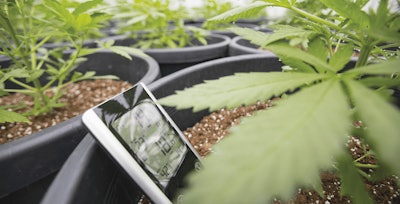
This report is based on data from proprietary research conducted by Cannabis Business Times, with support from Hawthorne Gardening Company and Quest, as well as insights from cultivators and experts on the challenges facing cultivations and tips to address them.
Humidity along with pest and disease management continue to be top concerns as plant health is critical to a cultivation business’s success.
Participants in Cannabis Business Times’ 2021 “State of the Growing Environment” research report indicated they were very aware of the dangers associated with poor plant health management, with 41% of growers noting it as one of their greatest cultivation challenges, followed closely by humidity control (32%).
While 41% of participants noted “pest and disease management” as a top cultivation challenge in this year’s report, 65% indicated having to deal with a pest or disease problem in their facilities in the past 12 months. Although this is a significant portion of participants experiencing pest and disease issues, that figure is down 6 percentage points from 2020, when 71% of participants reported dealing with pest and/or disease issues in the past 12 months.
The most commonly encountered pest and disease problems were: mites (30%), powdery mildew (29%), and aphids (26%). All occurrences of diseases and pests noted in 2021 were down from the 2020 report except for botrytis (12% of research participants indicated they had botrytis contamination, up from 8% in 2020).
More than half (54%) of this year’s research participants pointed to external contamination, either through contaminated inputs or staff tracking in contaminants, as the cause of pest and/or disease issues in their grows. Relatedly, growers seem to have gained a better understanding of how to control their environments to prevent plant health problems. About one-quarter (24%) of cannabis growers blamed unbalanced humidity levels for their pest and disease outbreaks (down 12 percentage points from last year’s study); 16 percent blamed a lack of airflow (down 10 percentage points from 2020); and 15% blamed uncontrolled temperature (down 1 percentage point from last year’s study).



















